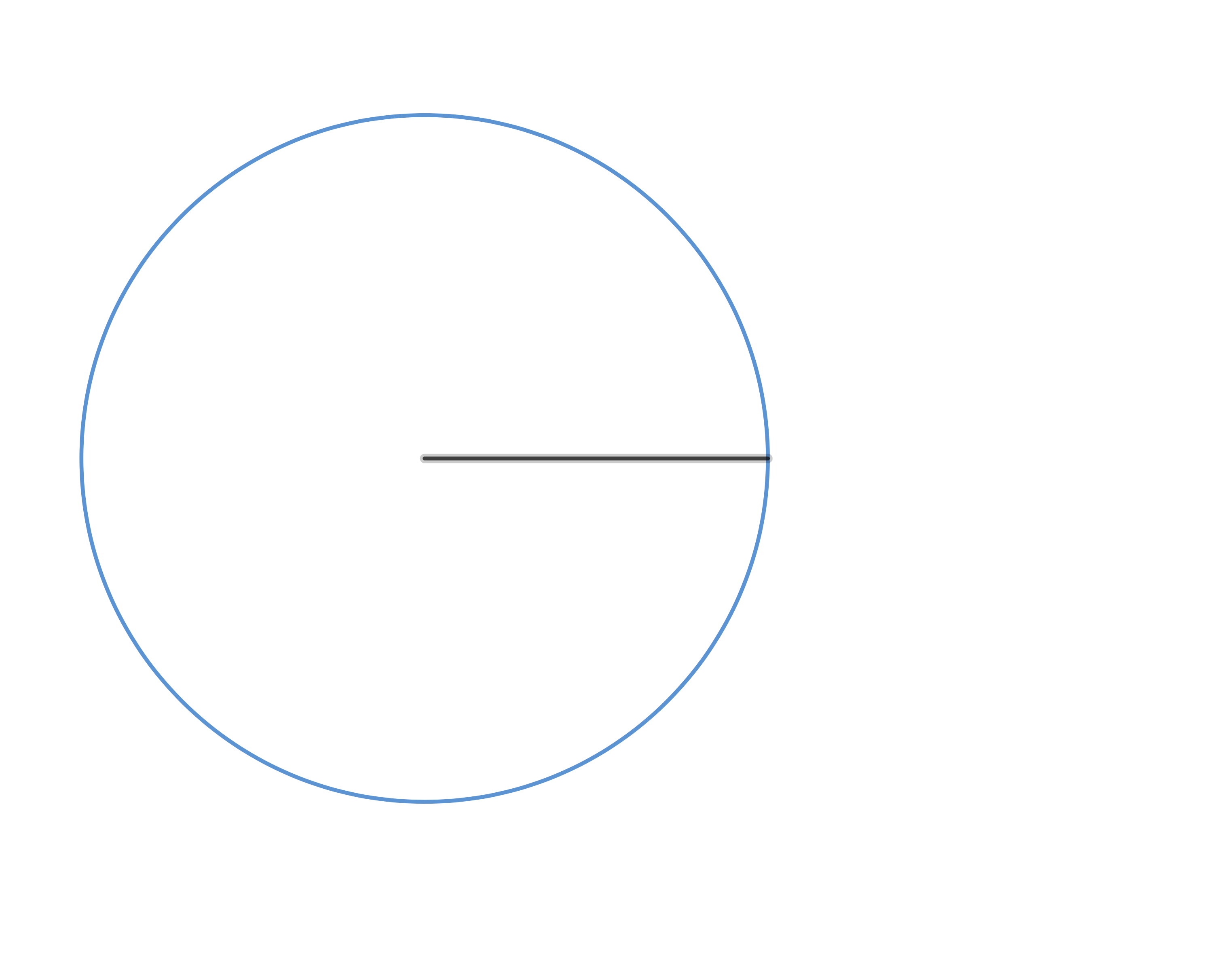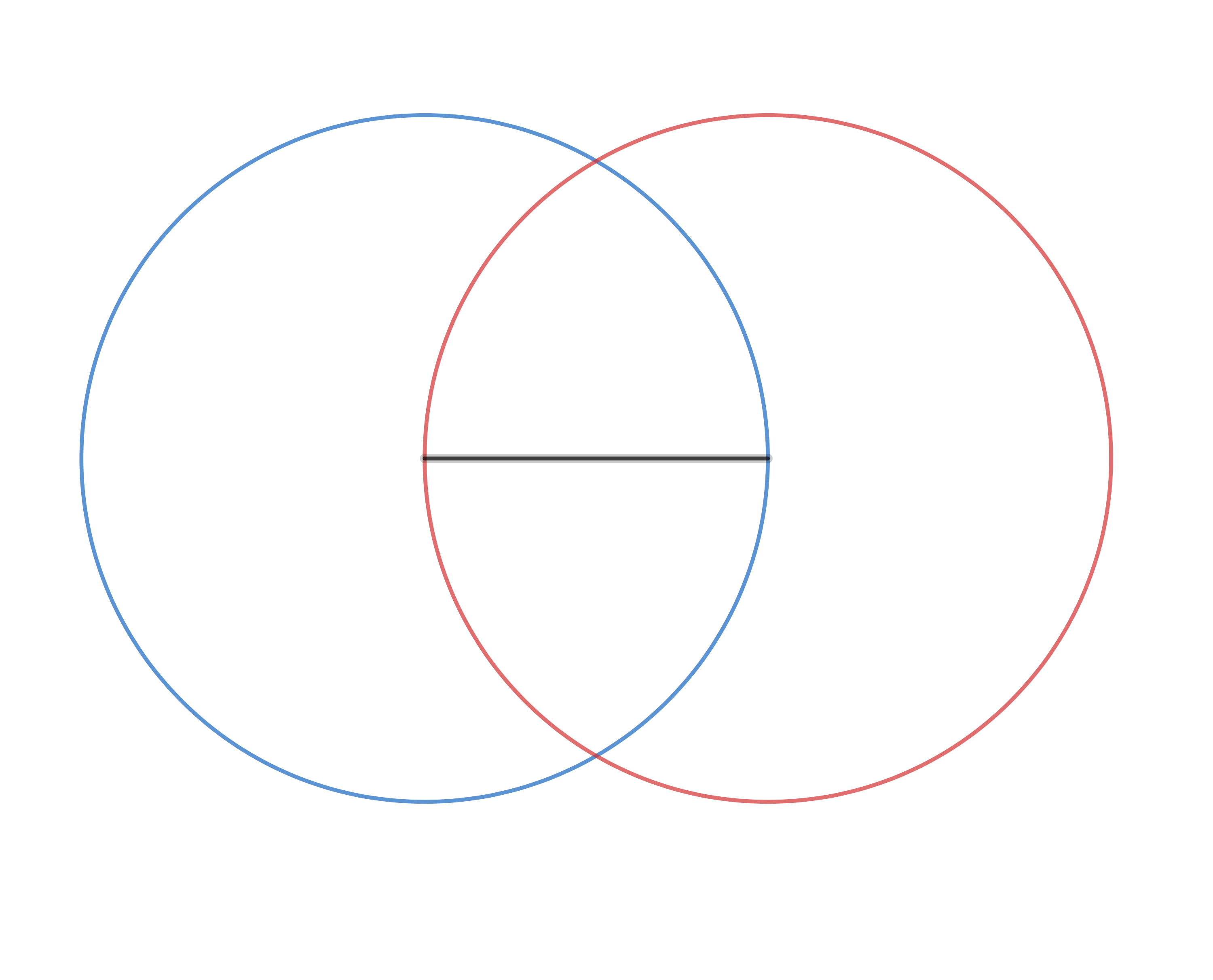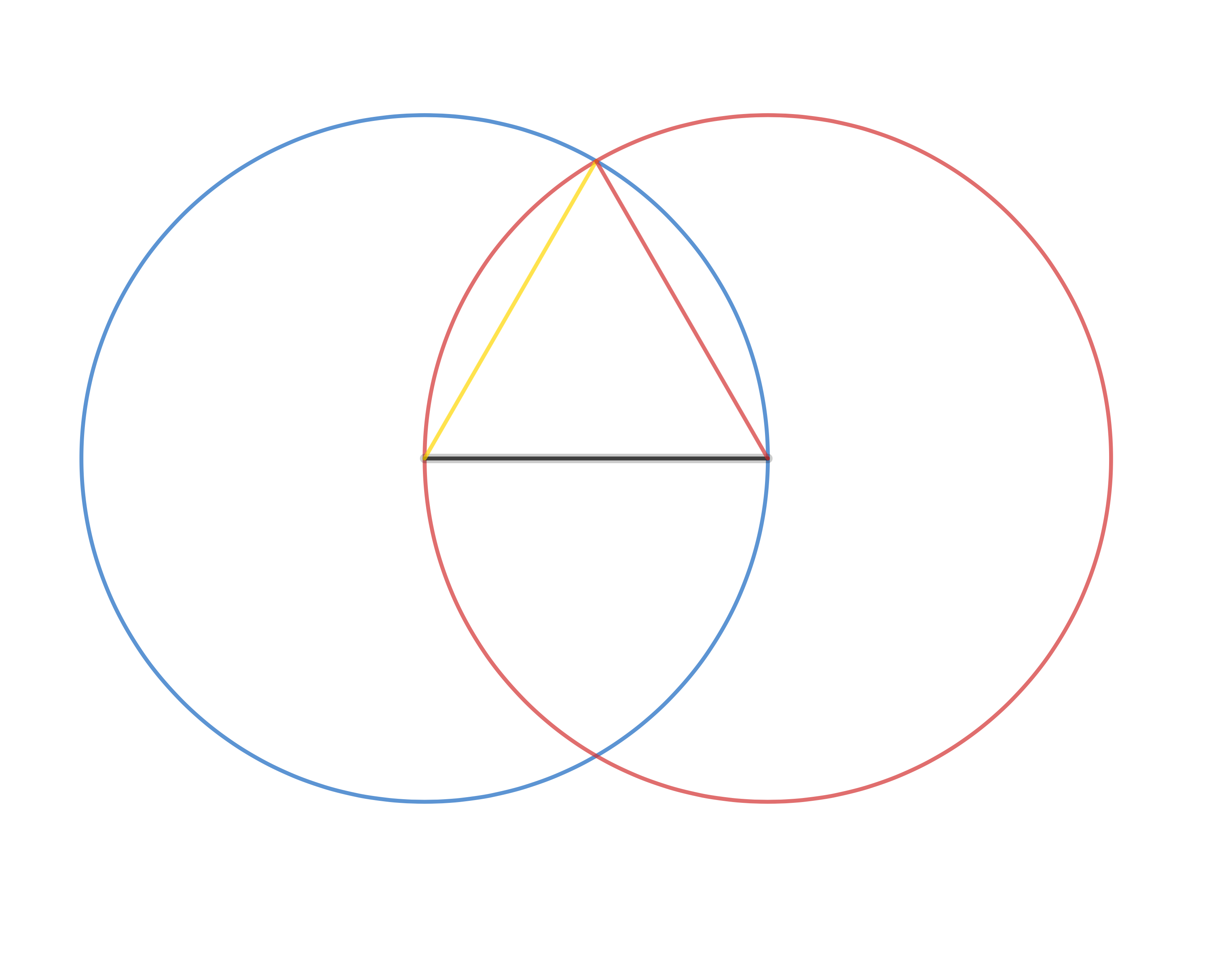Book 1, Proposition 01
Make an equilateral triangle, starting from a given line segment

Proposition 1, Problem
On a given finite straight line $({\color{#000} \rule[-0.5em]{1cm}{2pt} })$ to describe an equilateral triangle.

Describe the blue circle, whose radius is the black line (post. 3.).

Describe the red circle, whose radius is the black line (post. 3.).

Draw lines ${\color{#FFd700} \rule[-0.5em]{1cm}{2pt} }$ and ${\color{#D32F2F} \rule[-0.5em]{1cm}{2pt} }$ (post. 1.).

Then will the triangle $( {\color{#000} \rule[-0.5em]{1cm}{2pt} }, {\color{#FFd700} \rule[-0.5em]{1cm}{2pt} }, {\color{#D32F2F} \rule[-0.5em]{1cm}{2pt} } )$ be equilateral.
For
(def. 15.); and
(def. 15.),
(axiom. 1.);
and therefore we constructed the required equilateral triangle.
Q.E.D.
I made a Geogebra of this proposition: